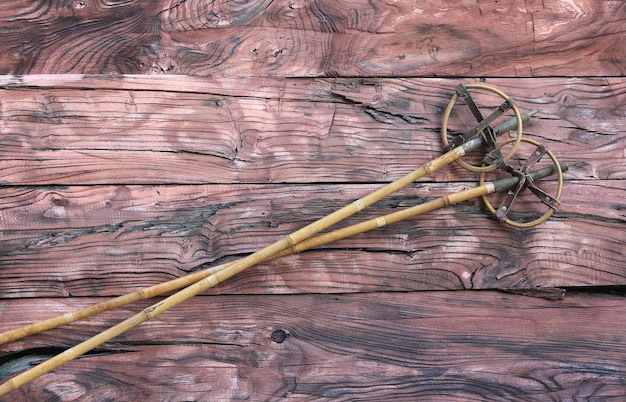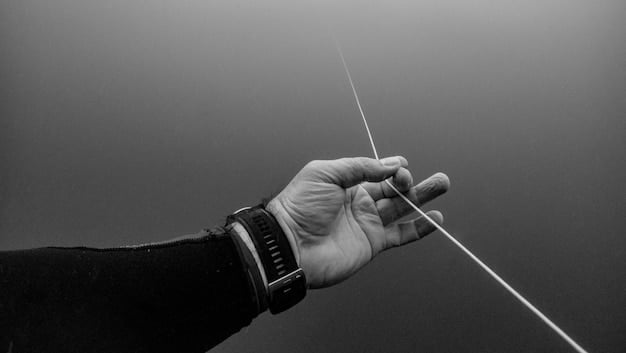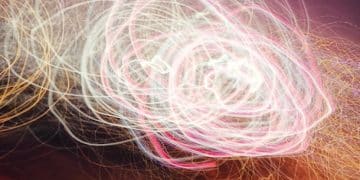The Science of Dowsing: Exploring Water Divining and Its Mysteries

The Science of Dowsing: Can You Really Find Water with a Stick? Exploring the Ancient Art delves into the historical practice of dowsing, examining its purported ability to locate water and other hidden substances, and exploring the scientific skepticism surrounding this ancient art.
Have you ever wondered if it’s truly possible to find water with just a stick? The practice of dowsing, also known as divining, has been around for centuries. But is it a legitimate skill or just a fascinating piece of folklore? The Science of Dowsing: Can You Really Find Water with a Stick? Exploring the Ancient Art attempts to unravel the enigma.
Join us as we explore the history, methods, and the scientific analysis behind water dowsing, analyzing whether it holds any real merit or remains firmly in the realm of pseudoscience.
What is The Science of Dowsing: Can You Really Find Water with a Stick? Exploring the Ancient Art?
The Science of Dowsing: Can You Really Find Water with a Stick? Exploring the Ancient Art is an ancient practice with the goal of uncovering hidden materials, such as sources of water, precious stones, or other buried metals, utilizing a tool, often a Y-shaped twig or a pair of L-shaped metal rods. The exact roots of dowsing are complex to trace, this technique has been recorded in different forms for hundreds of years.
Throughout history, dowsing has already been utilized for several applications, from assisting farmers uncover water spots for irrigation to prospectors finding ore deposits. With time, the method became deeply rooted in folklore and conventional wisdom, with many people attesting to its efficiency.
The History of Dowsing
Dowsing’s background goes as far as ancient eras with representations of related practices detected in ancient civilizations. The use of dowsing rods for mining purposes was documented in the 16th century. It slowly spread all around Europe, turning out to be specifically well-known for locating mineral deposits.
- Ancient Roots: Practices resembling dowsing have been traced back to ancient civilizations, with evidence suggesting its use in various forms for centuries.
- 16th Century Mining: The documented use of dowsing rods for mining dates back to the 16th century showing its early association with locating valuable resources.
- European Spread: Dowsing gradually spread all through Europe, gaining popularity, specifically for discovering mineral deposits and water sources.
- Diverse Applications: Historically, dowsing has been used for a wide range of purposes, including locating water, minerals, oil, and even missing persons.
To conclude, The Science of Dowsing: Can You Really Find Water with a Stick? Exploring the Ancient Art has a strong historical context, evolving from ancient techniques to its prevalent use in the course of the 16th century. This process has been utilized to uncover resources and its trip mirrors the intersection of traditional beliefs and sensible applications.
How Does Dowsing Supposedly Work?
Dowsing operates on the belief that people, through the use of simple instruments, can notice subtle energies or indicators that expose the presence of hidden resources underneath the ground. Whilst there’s no scientifically established mechanism explaining the workings of dowsing, numerous theories and interpretations had been proposed.
Dowsers commonly employ instruments which include forked twigs, pendulums, or L-shaped rods made from metal or timber. These tools are taken to react to the presence of the targeted substance, leading to movement or adjustment that indicates its detection.

The Dowsing Process
The traditional dowsing process usually includes someone walking over land, lightly preserving the selected tool. The dowser concentrates at the substance being searched, whether it is water, minerals, or some other goal. Proponents of dowsing trust that the tool will react bodily when passing over the place where the target is located, offering a clear sign to the dowser.
- Energy Sensitivity: Dowsers consider that they could access diffused energies or vibrations emanating from resources discovered underground.
- Subconscious Cues: Some theories suggest that subtle muscle actions or subconscious cues from the dowser’s mind contribute to the motion of the dowsing tools, reflecting an inner feeling or expectation.
- Geological Signals: Advocates suggest that dowsing gear can reply to geological indicators or magnetic fields associated to the presence of particular materials underground.
- Personal Connection: Successful dowsing frequently depends on a strong private connection between the dowser and the environment.
In summary, the supposed mechanism of dowsing remains shrouded in thriller and open to interpretation. While proponents attribute its effectiveness to the detection of diffused energies or subconscious cues, skeptics question the credibility of these claims, highlighting the lack of empirical proof to assist The Science of Dowsing: Can You Really Find Water with a Stick? Exploring the Ancient Art.
What Does Science Say About Dowsing?
The scientific community stays largely unconvinced concerning the efficacy of dowsing, because of the lack of constant and repeatable results in controlled experiments. Countless studies were performed to assess the validity of dowsing claims, with many failing to demonstrate any statistically extensive correlation between dowsing and the accurate detection of underground assets.
Skeptics argue that the perceived success of dowsing may be attributed to the placebo effect, affirmation bias, or honestly coincidence. With out solid empirical evidence to guide its effectiveness, dowsing is frequently categorized as a pseudoscience in place of a legitimate scientific endeavor.
Scientific Studies on Dowsing
Despite the skepticism, there have been scientific studies carried out to study the phenomenon of dowsing. These reports have various methodologies and consequences, contributing to the ongoing debate bordering its credibility.
- Statistical Analysis: Many scientific studies depend upon statistical analysis evaluate the accuracy of dowsing over chance.
- Controlled Experiments: Researchers set up rigid parameters to remove outside variables and subjective interpretations that might impact the results.
- Blind Testing: Dowsers are often examined in manage conditions the use of blind testing to lessen bias and subjective have an impact on on the results.
- Meta-Analysis: Some attempts incorporate meta-analysis methodologies, synthesizing findings from multiple studies to derive broader conclusions about dowsing phenomenon and validity.
In evaluation, while some individuals attest to the effectiveness of dowsing in numerous applications, the scientific community at large keeps skeptical due to the dearth of robust empirical evidence. Ongoing studies attempts to discover opportunity motives for dowsing phenomena, similar to confirmation bias or environmental variables, further underscore the complexity of evaluating this historical follow within a scientific shape.
Dowsing Today: Modern Uses and Perspectives
Despite being referred to as a historic practice, dowsing is still practiced around the world, albeit with various degrees of acceptance and reputation. Even as its use has decreased in mainstream scientific and industrial contexts, dowsing retains a niche in positive areas.
Nowadays, dowsing is often encountered in rural communities, in which it is used for locating water wells for agriculture or residential purposes. While many professional geologists and hydrologists rely on present day scientific methods for groundwater exploration, some individuals continue to depend on dowsing out of the concept, tradition, or a lack of access to alternative assets.

Contemporary Applications of Dowsing
Besides its traditional uses in water and mineral exploration, dowsing has found area of interest applications in various other fields. Although not universally acknowledged or scientifically validated, these uses mirror the enduring attraction and versatility of dowsing.
- Agriculture: Some farmers use dowsing to decide gold standard planting times, soil conditions, or areas of the land in need of unique attention.
- Health and Wellness: Dowsing has been included into other healing practices, with practitioners using pendulums or rods to discover strength imbalances or sensitivities.
- Archaeology: Some archaeologists use dowsing as a supplementary device for figuring out potential excavation sites or locating buried artefacts.
- Security: Dowsing is occasionally hired for detection of hidden objects which includes underground utilities, pipelines, and cables.
To summarize, although the technique has decreased in mainstream scientific and business contexts, The Science of Dowsing: Can You Really Find Water with a Stick? Exploring the Ancient Art still has specific areas in present day society. From its conventional uses in rural groups to niche applications, dowsing remains to captivate folks who are looking for non-traditional approaches to resource exploration and problem-solving.
Ethical and Environmental Considerations
While dowsing may seem like a harmless practice, it does raise some ethical and environmental concerns, especially when used in resource management or environmental projects. One primary issue is the potential for misinformation or false assurance. Relying on dowsing as the sole method of resource exploration can result in misinformed decisions that have environmental and economic consequences.
Another ethical difficulty relates to the potential exploitation of dowsing’s mystique for financial gain. Unethical practitioners can also make unfounded claims about their dowsing abilities, leading people to believe that dowsing can solve their problems. This could cause misguided investments or perhaps harm to the environment.
Responsible Use of Dowsing
Given the ethical and environmental considerations related, it’s essential to approach the technique responsibly and ethically. Individuals can promote responsible, informed decisions by integrating complementary data resources and applying it consciously.
- Integrate Dowsing: Dowsing records should be integrated with information from traditional scientific research and experts, making sure that decisions are based on complete information.
- Avoid Over-Reliance: Ethical dowsers need to avoid solely depending on it and instead emphasize the significance of consulting with experts and experts in the appropriate career.
- Promote Transparency: Ethical dowsers need to be obvious about the limitations and uncertainties of their practices.
- Respect Boundaries: Practitioners should avoid trespassing on the land or infringing upon assets without permission, adhering to ethical requirements even as engaging in dowsing activities.
Essentially, ethical and environmental issues surrounding the topic highlights the need for practitioners and customers to approach it with warning. Through promoting transparency, integrating complementary data sources, and upholding environmental stewardship, The Science of Dowsing: Can You Really Find Water with a Stick? Exploring the Ancient Art can be used more responsibly and ethically.
| Key Point | Brief Description |
|---|---|
| 🧐 History | Ancient practice used for centuries. |
| ⛏️ How it works | Detects subtle energy. |
| 🔬 Scientific view | Lacks empirical evidence. |
| 🌱 Modern Uses | Agriculture, archaeology, health. |
Frequently Asked Questions
Dowsing, also known as divining, is a conventional technique utilized to uncover underground water, minerals, or other concealed materials. Its origins date back hundreds of years, with proof of comparable practices rising in ancient civilizations.
Dowsers commonly use simple tools which include forked twigs, pendulums, or L-shaped rods fabricated from metal or wooden. These gear are taken to react to diffused energies or vibrations emanating from the target substance.
At the moment, the scientific community remains largely unconvinced of the efficacy of dowsing, as a consequence of a scarcity of ordinary and repeatable effects in controlled experiments. Many scientific studies have failed to demonstrate any factor between dowsing and the right detection of assets.
Even as its use has declined in mainstream scientific and industrial contexts, the technique remains to be practiced in rural communities for locating water wells, in addition to in niche applications. Such as agriculture, archaeology, and fitness.
The Science of Dowsing: Can You Really Find Water with a Stick? Exploring the Ancient Art may propose misleading information, financial exploitation, and environmental damage. As a result, practitioners need to prioritize ethical methods and integrate numerous resources alongside dowsing records.
Conclusion
In conclusion, The Science of Dowsing: Can You Really Find Water with a Stick? Exploring the Ancient Art remains a fascinating subject, blending ancient practices with modern skepticism. Its enduring appeal lies in its simplicity and the belief in unseen energies, even as scientific evidence remains elusive.
Whether viewed as a practical tool or a captivating piece of folklore, dowsing continues to spark curiosity. As we discover its mysteries, it’s essential to approach it with both an open mind and a discerning eye, acknowledging its historical significance and the ongoing debate surrounding its effectiveness.





